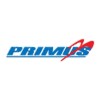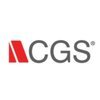
i
CloudRaft
Filter interviews by
CloudRaft Interview Questions and Answers
7 Interview questions
Kubevirt is a Kubernetes extension that allows running virtual machines alongside containers.
Kubevirt extends Kubernetes to support virtual machines as first-class citizens.
It enables users to manage VMs using kubectl commands.
Kubevirt uses Kubernetes resources like Pods and Services to manage VMs.
It provides a way to define VMs using YAML manifests.
Users can create and run VMs using Kubevirt in a Kubernetes clust...
DNS in Kubernetes is used to resolve domain names to IP addresses for services running in the cluster.
Kubernetes uses CoreDNS as the default DNS server for service discovery within the cluster.
Each service in Kubernetes gets a DNS name in the format <service-name>.<namespace>.svc.cluster.local.
Pods can resolve DNS names of other services within the cluster using the built-in DNS resolution mechanism.
Ex...
Ingress is a Kubernetes resource that manages external access to services within a cluster.
Ingress routes external traffic to services based on rules defined in the Ingress resource.
Ingress controllers are responsible for implementing the rules set in the Ingress resource.
Ingress can provide features like SSL termination, load balancing, and path-based routing.
Ingress resources typically include rules for hostname...
Queues are data structures that follow the First In First Out (FIFO) principle. Different types include linear queues, circular queues, and priority queues.
Linear queues: Elements are added at the rear and removed from the front.
Circular queues: Elements are added and removed in a circular manner.
Priority queues: Elements are removed based on priority levels assigned to them.
To build a real-time progress bar, use JavaScript setInterval to update the progress continuously.
Use HTML/CSS to create the progress bar UI.
Use JavaScript setInterval function to update the progress bar at regular intervals.
Calculate the progress percentage based on the current progress and total progress.
Update the progress bar width/style dynamically based on the calculated percentage.
Various Linux commands are essential for a DevOps Engineer's daily tasks.
ls - list directory contents
cd - change directory
pwd - print working directory
grep - search for patterns in files
chmod - change file permissions
tar - archive files
ssh - secure shell for remote access
ps - display information about running processes
top - display and update sorted information about processes
find - search for files in a directory...
Different types of services include web services, cloud services, and microservices.
Web services: Services that are accessed over the internet using standard protocols like HTTP.
Cloud services: Services provided by cloud computing providers, such as AWS, Azure, and Google Cloud.
Microservices: Architectural style where an application is composed of small, independent services that communicate over APIs.
CloudRaft Interview Experiences
4 interviews found
I appeared for an interview in Dec 2024.
(4 Questions)
- Q1. Around Devops, cloud, CloudNative and Open source
- Q2. Different Linux command used in daily life of devops Engineer
- Ans.
Various Linux commands are essential for a DevOps Engineer's daily tasks.
ls - list directory contents
cd - change directory
pwd - print working directory
grep - search for patterns in files
chmod - change file permissions
tar - archive files
ssh - secure shell for remote access
ps - display information about running processes
top - display and update sorted information about processes
find - search for files in a directory hier...
- Q3. Working of kubevirt
- Ans.
Kubevirt is a Kubernetes extension that allows running virtual machines alongside containers.
Kubevirt extends Kubernetes to support virtual machines as first-class citizens.
It enables users to manage VMs using kubectl commands.
Kubevirt uses Kubernetes resources like Pods and Services to manage VMs.
It provides a way to define VMs using YAML manifests.
Users can create and run VMs using Kubevirt in a Kubernetes cluster.
- Q4. Kubernetes Archiecture
(4 Questions)
- Q1. All about Kubernetes
- Q2. Different types of service
- Ans.
Different types of services include web services, cloud services, and microservices.
Web services: Services that are accessed over the internet using standard protocols like HTTP.
Cloud services: Services provided by cloud computing providers, such as AWS, Azure, and Google Cloud.
Microservices: Architectural style where an application is composed of small, independent services that communicate over APIs.
- Q3. How DNS works in kubernetes?
- Ans.
DNS in Kubernetes is used to resolve domain names to IP addresses for services running in the cluster.
Kubernetes uses CoreDNS as the default DNS server for service discovery within the cluster.
Each service in Kubernetes gets a DNS name in the format <service-name>.<namespace>.svc.cluster.local.
Pods can resolve DNS names of other services within the cluster using the built-in DNS resolution mechanism.
Externa...
- Q4. Working of ingress
- Ans.
Ingress is a Kubernetes resource that manages external access to services within a cluster.
Ingress routes external traffic to services based on rules defined in the Ingress resource.
Ingress controllers are responsible for implementing the rules set in the Ingress resource.
Ingress can provide features like SSL termination, load balancing, and path-based routing.
Ingress resources typically include rules for hostnames, pa...
I appeared for an interview in Jul 2024.
(3 Questions)
- Q1. What are queues? Explain the different types.
- Ans.
Queues are data structures that follow the First In First Out (FIFO) principle. Different types include linear queues, circular queues, and priority queues.
Linear queues: Elements are added at the rear and removed from the front.
Circular queues: Elements are added and removed in a circular manner.
Priority queues: Elements are removed based on priority levels assigned to them.
- Q2. How to build a progress bar, which works realtime?
- Ans.
To build a real-time progress bar, use JavaScript setInterval to update the progress continuously.
Use HTML/CSS to create the progress bar UI.
Use JavaScript setInterval function to update the progress bar at regular intervals.
Calculate the progress percentage based on the current progress and total progress.
Update the progress bar width/style dynamically based on the calculated percentage.
- Q3. What projects you work on?
- Ans.
I have worked on projects involving automation of CI/CD pipelines, infrastructure as code, and monitoring tools.
Automation of CI/CD pipelines using tools like Jenkins and GitLab
Implementing infrastructure as code using Terraform and Ansible
Setting up monitoring tools like Prometheus and Grafana
Integrating automated testing into CI/CD pipelines
Mostly all about Kubernetes and some DevOps tools. Also asked me to build a simple HTTP Service
I applied via LinkedIn and was interviewed in May 2024. There was 1 interview round.
(2 Questions)
- Q1. Tell us about your previous work experience.
- Q2. Explain the recruitment process
- Ans.
The recruitment process involves identifying, attracting, and selecting candidates for job vacancies within an organization.
1. Job Analysis: Determine the skills and qualifications needed for the position.
2. Sourcing Candidates: Use job boards, social media, and networking to find potential candidates.
3. Application Process: Candidates submit resumes and cover letters for review.
4. Screening: Conduct initial screenings...
(2 Questions)
- Q1. Introduce Yourself
- Ans.
I am a recent graduate with a degree in Marketing, eager to apply my knowledge and skills in a professional setting.
Recent graduate with a degree in Marketing
Passionate about applying marketing knowledge in a professional setting
Eager to learn and grow in the field
- Q2. Marketing Experiences
- Ans.
I have experience creating social media campaigns, conducting market research, and analyzing consumer behavior.
Created and managed social media campaigns for a clothing brand
Conducted market research to identify target audience for a new product launch
Analyzed consumer behavior data to optimize email marketing strategies
Top trending discussions






Interview questions from similar companies

Interview Questionnaire
1 Question
- Q1. The questions where asked based on the business analyst task and responsibilities.
Interview Preparation Tips
1. Was basic HR round where the HR learned abotmut your working experience .
2. Assignment - basis your position they share you a assignment to understand your knowledge in the relevant area.
3. The round with senior person.

Interview Preparation Tips
Experience: CV should focus on the skill set previously mentioned. Concise and to the point sentences. Line out projects and internships well. Balance between academia and extra curriculars. Attend the CV making workshop of Opera and work on it accordingly.
Tips: Don’t put things totally irrelevant to the job profile. Don’t write long sentences. Know your CV well for further stages.Anything related to your CV should be at the tip of your tongue.
Round: Test
Experience: Don’t spend a lot of time on one question in quant section. There’s a cut-off in Quant and your focus should be on clearing it. If you clear the cut-off, the puzzle section will be evaluated, where solving at least 2 is generally good enough. Puzzles are hard, and need a lot of prior practice.
Round: HR Interview
Experience: Direct selections take place at the end of all interviews after a mutual discussion between all the panels. Know your CV thoroughly. Prepare for some HR questions as well. Puzzle solving and guesstimates are asked, so prepare them well. When you are asked a puzzle, do not sit quietly but think aloud. The interviewers help you structure your thoughts. Most of the times, just knowing your approach is enough for them
Tips: Evaluate the nature of your interviewer for the first 5 minutes and if possible treat the interview like a discussion. They just want to know more about you so tell it to them. Most of them are very friendly, and you will feel at ease. Be confident. Sound excited while talking about your projects/internships. It gives them confidence in you. Be very very thorough with your CV. Nothing gives a bad impression like not knowing about yourself. Ask questions if you have them at the end of the interview.
General Tips: 1: Be Confident.
2: Keep Smiling.
3: Do not be Panic.
4: Remember they are here to hire you but not reject you.
5: Do not loose hope.
6: Believe at yourself.
7: Start preparing early.
8: Do demo interviews with your friend.
Skills: Mathematics, Computer Science
College Name: IIT KHARAGPUR
Motivation: Every body joins a comapny for making a software or earning money. But I was always motivated to MAKE MONEY. I have taken this job because they have very extensive work in Share Market and they have lots of MBA from IIM's, Lots of CAs, CS. Thats why i have choosen Edelweiss. I have rejected epic System USA for this profile.

Interview Preparation Tips
Experience: I started preparing my resume somewhere around August end. I spoke to a few seniors about it and read quite a few resumes, especially of those seniors who either had a profile similar to mine or had secured jobs in fields of my interest, eg. Consulting, finance, etc. I also attended the Resume Writing Workshop conducted by McKinsey and Co. on campus and cleared a few doubts there.
Tips: I would advise you guys to start preparing your resumes well in advance, it is not something to be kept for the last minute. Being the first form of acquaintance between you and a firm, it is a highly important document and the way you highlight your strong points and attributes can go a long way in shortlisting you from amongst the hundreds of resumes that they have to scan. Also, it is important that you be able to speak on any point in your resume in detail, hence you must be sure of what you are writing in it.
Round: Case Study Interview
Experience: The procedure of selection for Opera Solutions was a set of 4 interviews, each having a case study and some HR questions. The initial shortlist had around 22 candidates, after the first 2 interviews around 10 candidates were selected for the final rounds. Finally 3 candidates were made offers. There were no GDs, only case interviews. The first interview had a case involving a music company which scouts for amateur talent and launches them. They want to enter India and want you to analyse the market and suggest if its feasible or not. The interviewer gave a lot of data related to market share of pop music, bollywood, devotional music, etc and it suggested that the market share of the genre related to the company is very little. However I think what worked best was that I also pointed out certain solutions which could make it feasible, such as merging with another company in a genre where the given company has core competencies in. I think this was the high point of the interview which I atleast would like to believe compensated for a later interview that I did not do well in. Another interview had a case where a pharmaceutical company in the US wants to enter India. A set of constraints and data was given and I was asked to calculate if it should actually setup a manufacturing facility in India or manufacture in the US and transport to India. I did not do well in this one, I wasn’t being able to come up with a figure. Both the interviews had an HR component where I was asked about my strengths and weaknesses, about Mood Indigo and my academic record. I was asked to describe myself. I was also asked to talk about my co-intern’s project in ITC (she was also interviewing with Opera). In a subsequent interview after the shortlist, I was asked to estimate the market for Maruti cars, domestic air travel. They weren't expecting too much detail, the interviewer was more interested in the approach. point.
Tips: I attended most of the initial PPTs. One does get a good understanding of what a firm does and where exactly do you fit into it, you also understand what they are looking for and what is the extent of their operations. I must admit though that I found my interaction with seniors, especially those working in those firms was more informative and fruitful. They can give clarity in certain grey areas that companies might stay non-committal on.ending across links/documents would help us compile a single point resource) . I prepared for case studies from the material I took from seniors, most of which is available on the LAN. For case studies I prepared with a friend and sometimes in groups of 3. I think this method is better than individual preparation because the other person can point out where you are going wrong, you get a different perspective and at the same time you can prepare in a fashion where one interviews the other and vice versa, so you get slightly comfortable with how an actual interview might feel like. It is however important to ensure that the person you are preparing with is competent and complementary to your skill sets, so that you can improve upon aspects where you might be lacking in.
General Tips: Case studies and HR questions. One should be very comfortable with points mentioned in the resume and should be able to talk at length about any . I guess it'd just be shifting a little from being myself if you know what I mean. A lot of seniors would give you a lot of fundae, but at the end one must remember that unless one is comfortable with a certain way of speaking or certain method of solving cases, it wont look genuine. For example, one need not thrash out every single detail of a case before beginning to solve it, sometimes the interviewer might get impatient or might think you are trying to buy time to think by asking unnecessary details. So if you are the kind of a person who can intuitively draw good conclusions at the outset so as to decide which direction to proceed in and hence which questions to ask, you can surely go ahead and do that, you need not also ask questions that you know are not required. Case interviews are very feel-good interviews, even if you make a mistake you will be guided back on track by the interviewer, hence I personally would recommend that you stick more to your general approach to solving cases (if you know it is a good one and works of course) and not try to change too much just because a certain senior did it in a different way.
College Name: IIT BOMBAY

Interview Preparation Tips
Tips: Resume building is the most important of all steps. Keep it concise and to the point.
Round: Test
Experience: Puzzles
Tips: Practice as many puzzles as possible
Round: Stress Interview
Tips: Keep your cool, divert interview towards your strong zones
Round: Technical Interview
Experience: Guesstimates (basic level) and puzzles. Also know your resume and courses well
General Tips: They want to check your thinking, try every problem given in interview. They would have simple solutions.
Skills: Critical Thinking
College Name: IIT DELHI
Motivation: Application of statistics

Interview Preparation Tips
Experience: Resume is the candidates face before the interview. All the things that he/she wants to communicate should be communicated well and in an organized manner. Giving excessive and irrelevant information doesn’t heed well with the company and the recruiting staff. For, non-core jobs a long resume is not necessarily a good resume. They generally prefer a short and concise resume giving only the details relevant to the job profile being offered. For example, for a post of Business Analyst giving a long list of technical and course projects will not help the candidates cause. I personally focussed a lot on Position of Responsibilities and extracurricular activities, especially those showcasing my leadership and oratory skills.
Round: HR Interview
Experience: The first interview began with some questions about me. The interviewer asked me to tell something about me and my hobbies. Then he moved on to my resume and asked questions related to my intern and the PORs I had held and asking me to give a brief description about the duties involved. These questions were basically to ease me into the interview. Then he asked the routine interview questions like why consulting, why not a core job, what makes you think you are suited for this job. He asked me to relate some incident that showcased my leadership and teamwork skills. After the HR part, he gave me a case study. I was asked to estimate the market size of the bulbs market in India. It was an easy enough case study and I asked a lot of questions like whether I have to estimate for commercial and domestic both, for bulbs and CFL both etc. The catch in the question was to consider the replacement ratio for the bulbs and CFL.
Round: HR Interview
Experience: The second interview also had a similar beginning with the routine questions. Then he moved on to case study which was a number crunching problem. He gave me almost no details and just narrated the situation. I had to as all the questions probing for the numbers and the data. The case went on as he kept elaborating the case with new additions.
Also, the interviewer was senior partner in the firm and I felt that I had made a genuine rapport with him. I felt free and asked him a lot of questions about his job, the job profile and how important an MBA degree is for the future. He explained me the details and I had a very healthy communication with him.
Round: HR Interview
Experience: This one was pretty short and quick. The interviewer decided to ask me questions about my hobbies. We discussed about Hollywood movies, actors, football and my other interests. We both shared an interest in Hollywood movies and we had a nice time discussing the merits of my favourite actor, MORGAN FREEMAN. Then he gave me a puzzle. There are 25 horses and only 5 can race in one race. I had to determine the fastest three horses in the minimum number of races (the answer is 7. Try it out. It’s not very tough). I was not able to solve the puzzle on my own but he guided me with various clues and finally I was able to complete the puzzle with his help.
Tips: Be prepared with the routine answers but don’t mug them up. Remember them in points and elaborate them as you go through the monologue. Answers to questions like why consulting and why should we hire you should be prepared very well. Prepare these answers yourself and don’t mug up some standard answers. The interviewer will know when you do that. Prepare some questions of your own about the job and the company and ask them to the interviewer when he gives you the chance. Don’t get nervous if you can’t get some question but instead try a new approach or ask for help.
General Tips: Focus a lot on extracurricular and PORs in the resume but at the same time keep it balanced. Prepare for case study interviews and puzzles. Be through with your resume and why you are there for the interview. Getting selected for the interview means you have an equally good opportunity as anyone else, so be confident.
College Name: IIT KANPUR
Motivation: The major information about the company was obtained from the pre-placement talk held by the company at the college campus. Also I talked to some of my seniors working there and in other consultancy firms as business analyst to get a feel about the profile and job description. Also enquiring about the attributes that the company majorly looks for from the seniors helped a lot.

Interview Questionnaire
7 Questions
- Q1. How to assigning the new task to employees based on their past performance
- Ans.
Assign tasks based on past performance by analyzing employee's strengths and weaknesses.
Analyze employee's past performance data
Identify their strengths and weaknesses
Assign tasks that align with their strengths
Provide training or support for areas of weakness
Regularly review and adjust task assignments based on performance
Consider employee preferences and career goals
- Q2. Some Probability problems
- Q3. Some basic HR questions
- Q4. Write a 10 digit largest number with some constraint (I didn’t remember the exact constraint but it’s a standard question)
- Q5. Guesstimate the number of viewers to a sports blog
- Ans.
Assuming the blog covers popular sports, the number of viewers can range from a few thousand to millions depending on the quality of content and marketing strategies.
Consider the popularity of the sports covered in the blog
Evaluate the quality of content and frequency of updates
Assess the marketing strategies used to promote the blog
Look at the engagement level of the blog's social media accounts
Take into account the c...
- Q6. Guesstimate how much a thief, who operate on shopping can earn in a year
- Ans.
A thief operating in shopping can earn anywhere from a few thousand to millions of dollars per year depending on their tactics and location.
The thief's location and the type of stores they target will greatly impact their earnings
Factors such as the thief's level of experience, skill, and risk-taking behavior will also play a role in their earnings
Some thieves may work alone while others may operate in organized groups...
- Q7. The probability of a car passes the highway in a subset time if the probability of a car passing in one hour given
- Ans.
Understanding car passing probabilities over time helps in traffic analysis and planning.
Probability can be calculated using the formula: P = (number of successful outcomes) / (total outcomes).
If a car passes every 10 minutes on average, in one hour (60 minutes), you expect 6 cars.
For a subset time, adjust the expected number of cars based on the time interval.
Example: In 15 minutes, if 6 cars pass in 60 minutes, expec...
Interview Preparation Tips
Experience: There were 3 Job profiles open of opera solutions (Solution Analyst, Analytics Specialist, and Software Engineer). Students are asked to sign just for one profile. There was a test for analytics and software profile and direct interview for solution profile (Consultant profile).
Tips: Spend enough time before choosing the profiles. Spoke to senior who had a similar job and figure out your best suitable profile and prepare accordingly.
Round: Test
Experience: Opera solution conducts workshop for shortlisted candidates. In the workshop, they mostly tell about technical part behind big data management such as Mainframe and Hadoop. After the workshop, the test was conducted. The test had two sections, the first section contains objective questions around 20-25 (I did not remember the exact number). Objective questions were of aptitude type (moderate level of difficulty). The second section contains 5-6 subjective questions, mainly focus on probability again the moderate level of difficulty. 30 students were shortlisted for next round (interview round).
Tips: Start preparing as early you can. Practice problem daily does not wait for last few day. The main point of practice is to develop a habit of increasing accuracy and speed which is the crucial points of aptitude test.
For probability practice, there are online website and blogs you can take help from them. I have listed down some which are used. You should have some prior practice before setting for test otherwise, it would be difficult to do well in the test as some questions are tricky and difficult to solve in the first time.
For aptitude practice, you can refer TIME material, I think that is sufficient.
-----/
-----.shtml
-----
-----.html
Duration: 60 min minutes
Total Questions: 20+5
Round: Guesstimate Interview
Experience: The interviewer first goes through my resume and ask some basic question, not in depth. Then he asked me some puzzle (similar type of question asked in the subjective paper but with a high level of difficulty) and one guesstimate.
My interview last for 10-15 mins, the interviewer is very helpful and always try to calm and comfort me.
The interviewer gave me feedback and point out some area on which I can quickly look it for further interview.
Tips: I have assigned a buddy, IIT graduate having the same specialization. (Opera solutions follow buddy program similar of other consultant company). I personally found out buddy program very useful, you should contact your buddy or at least talk to him ones. The information you get from a buddy is very helpful of preparing for an interview. You get some aspect on which domain you need to work.
Round: Technical Interview
Experience: Next round was the telephonic interview with a senior analyst. The interviewer asked me some question from my resume especially on the technical project which involves some mathematics tool.
Then he asked some probability problems which are very tough.
Tips: The interviewer was interested in your approach only, how you’re tackling the problem. How much wide can you think? The interviewer is also ready to help you and try to figure out your strength. So be calm and speak with confidence.
Round: Stress Interview
Experience: The interviewer asked me some question from my resume in depth.
He asked one guesstimate and one probability question.
Round: Behavioural Interview
Experience: The interviewer started with questions like why this company, which other companies did I appeared for.
He asked me some quick calculation problems.
General Tips: Resume: Spend sufficient time on the resume as I was the initial step of shortlisting.
You be able to speak at any point in your resume in detail, hence you must be sure of what you are writing in it.
Puzzle: Practice Daily
Guesstimate: Practice with your sincere friends
Skills: Ability To Make Quick Calculations, Puzzle Solving Capability, Knowledge Of Your Resume Points, Guesstimation Cases, Probability And Statistics
College Name: IIT Bombay
CloudRaft Interview FAQs
Tell us how to improve this page.
CloudRaft Interviews By Designations
Interview Questions for Popular Designations
- Associate Interview Questions
- Executive Interview Questions
- Analyst Interview Questions
- Software Engineer Interview Questions
- Sales Executive Interview Questions
- Consultant Interview Questions
- Graduate Engineer Trainee (Get) Interview Questions
- Associate Software Engineer Interview Questions
- Show more
Overall Interview Experience Rating
based on 4 interview experiences
Difficulty level
Duration
Interview Questions from Similar Companies

Primus Global Technologies

TriGeo Technologies

GrapplTech

Plada Infotech Services
- Home >
- Interviews >
- CloudRaft Interview Questions










